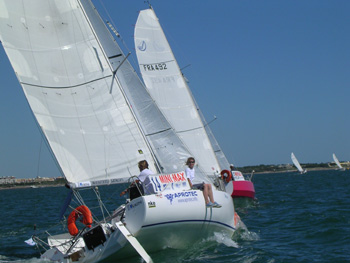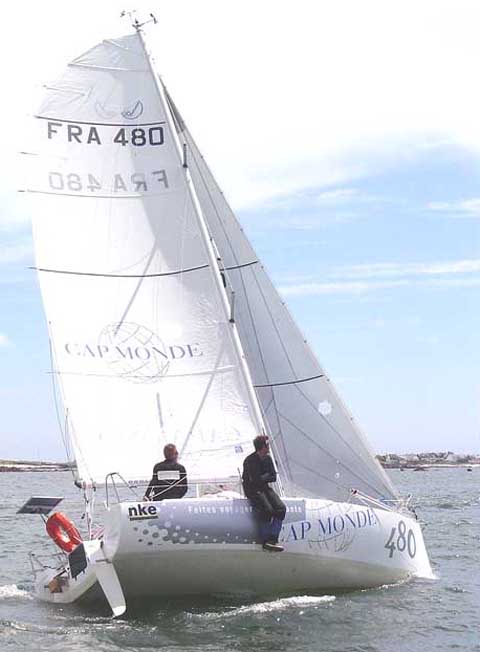The 6.5m is a fascinating class, but I feel it has little relevance to us. Apart from showing what can happen to a rule for cheep racing boats?
It will be very hard to make a scale 6.5m - Footy work -I would not say it’s impossible, but I’m thinking it…
When you scale boats down, the displacement falls with the cube root of the scale but the stability falls with the 4th root (displacement x beam) and the wind speed scales with the square root of the scale.
So a 6.5m scale footy will have a displacement of 110gms or less and a sail area, around 930 sq cm or more.
A good breeze of 15 kts for a 6.5m boat scales to only 3.2 kts for a Footy.
A Footy sailing in 15kts of wind, would scale back to a 6.5m sailing in 70kts, a good breeze for us, but survival conditions for them.
Boats with moving ballast are a different type of design to fixed ballast boats and both types need different hull forms. You can interchange hull types but it will be a lot less than ideal.
I built a string of wide- transom hulls for an off-wind race series and have spent a long time regretting it. They are fast at times but hard to sail well, the new narrow and light boats are faster- even down wind.
If you want a scale 6.5 boat or similar you will be much better off building a larger model with the movable ballast of the original. If you want a scale Footy, you need to start with a heavy boat - a motor/sailer, fishing boat or the like.
I quite fancy a medieval trading vessel, such as John Cabot’s ‘Matthew’ - 64 ft on deck and 85 tons displacement. This gives a 330gm Footy with 90mm beam with well rounded sections, sounds familiar?
Ballast ratio.
A high ballast ratio is always important. The previous example uses two boats with the same ballast and draft, but having 350 and 450gm displacement. The point is made that both boats have the same stability, so ballast ratio is not important.
But this means that both boats can carry the same rig in the same wind speed, so the lighter one has a much higher power to weight ratio and less drag, which makes it the faster boat.
Racers spend a fortune trying to get the weight down - one 6.5m sailor was planning to live on cereal bars and water, in order to save weight and improve his ballast ratio.
I didn’t mean this to sound be so negative, but Footys are an extreme class and I feel it’s best to start with a blank sheet of paper, rather than trying to adapt another style of boat to fit.






